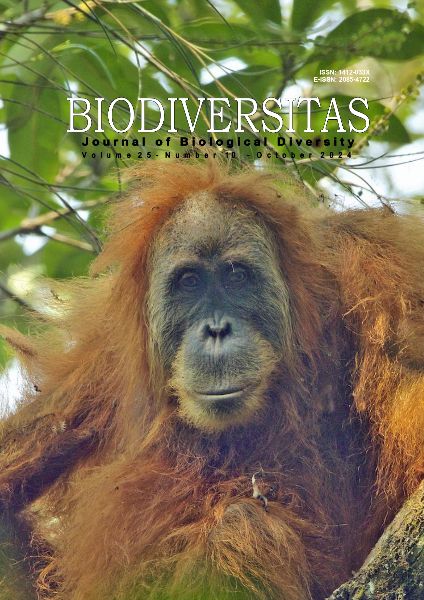Analysis of environmental parameters supporting the abundance of Acanthaster planci in the Wakatobi and Sombori Marine Protected Areas, Sulawesi, Indonesia
##plugins.themes.bootstrap3.article.main##
Abstract
Abstract. Jansit AF, Zamani NP, Subhan B, Rachmawati R, Lalang. 2024. Analysis of environmental parameters supporting the abundance of Acanthaster planci in the Wakatobi and Sombori Marine Protected Areas, Sulawesi, Indonesia. Biodiversitas 25: 3672-3682. Wakatobi Islands and Sombori Islands offshore Sulawesi, Indonesia are two marine conservation areas where Acanthaster planci (Linnaeus, 1758) is reported. The study was conducted to determine what parameters support the life of A. planci, including the composition of coral cover and abundance of reef fish, especially the predatory coral fish of A. planci. The relationship between environmental parameters, coral cover conditions, reef fish abundance, and A. planci abundance was analyzed using multivariate analysis, namely Principal Component Analysis (PCA). Sampling was conducted using a purposive sampling method based on information on the presence of A. planci obtained from local community reports and monitoring reports from related agencies, which was designed to be comprehensive. The determination of observation locations was also based on differences in environmental characteristics, such as nutrient inputs from community settlements. The results showed that A. planci was only found in the Sombori Islands as many as 36-117 individuals. The high number in the Sombori Islands was followed by a low cover of live hard corals, a lower abundance of reef fish compared to the observation station in the Wakatobi Islands, and higher pH, salinity, nitrate, and temperature parameters compared to the observation station in the Wakatobi Islands. The high number of A. planci individuals was followed by a high percentage of coral break cover and high rock. Coral fractures and nitrate can help increase the likelihood of successful recruitment of A. planci larvae, thereby supporting the abundance of A. planci in the Sombori Islands.

